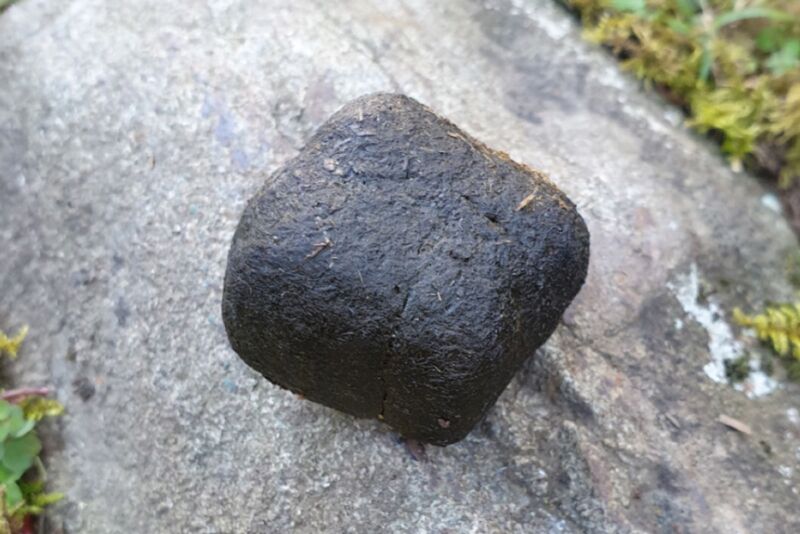
Enlarge / Look at this lovely cube-shaped piece of poo, courtesy of the Australian bare-nosed wombat. (credit: Patricia J. Yang et al., 2021)
Scientists have been puzzling for decades over how the Australian bare-nosed wombat poops out neat little cubes of feces instead of tapered cylinders like pretty much all other animals. According to a new paper published in the journal Soft Matter, the secret lies in their intestines, which have varying stiff and soft regions that serve to shape the poo during the digestive process. Earlier preliminary findings by the same group won the 2019 Ig Nobel Physics Prize.
"Bare-nosed wombats are renowned for producing distinctive, cube-shaped poos. This ability to form relatively uniform, clean cut feces is unique in the animal kingdom," said University of Tasmania wildlife ecologist Scott Carver, a co-author on the paper. "They place these feces at prominent points in their home range, such as around a rock or a log, to communicate with each other. Our research found that these cubes are formed within the last sections of the intestine—and finally proves that you really can fit a square peg through a round hole."
Zoologist Eric Guiler first noted the unusual shape of wombat droppings in 1960, and to date, wombats are the only known animals to produce six-sided cube-shaped poo. It's one of several examples of naturally occurring pattern formation, such as the columns of Ireland's Giant's Causeway (formed by cooling lava), or how vibrating membranes can make grains of sand form "Chladni figures." But naturally occurring cube shapes are extremely rare. The Australian bare-nosed wombat (Vombatus ursinus) can pump out as many as 100 cube-shaped droppings a day.
No comments:
Post a Comment